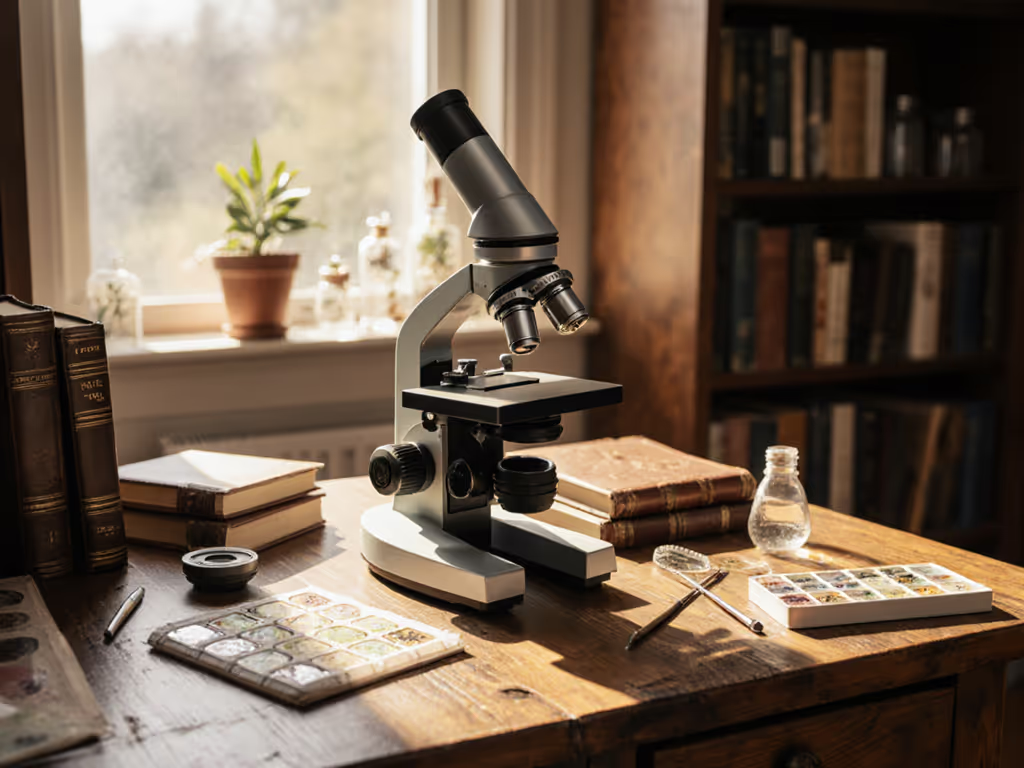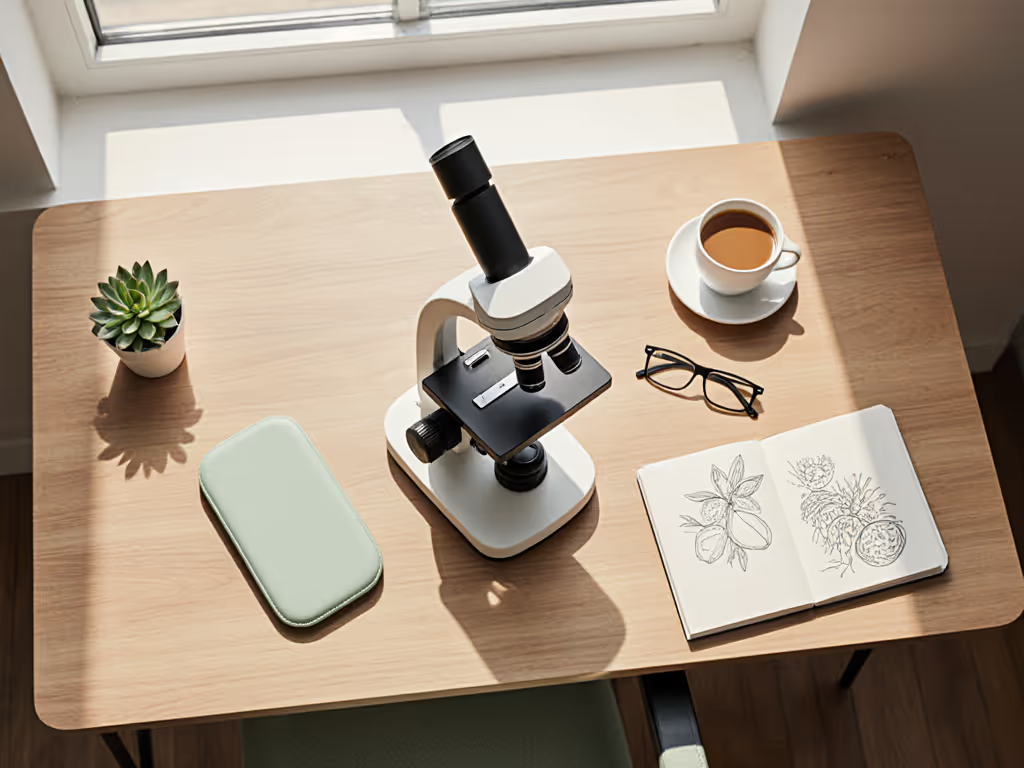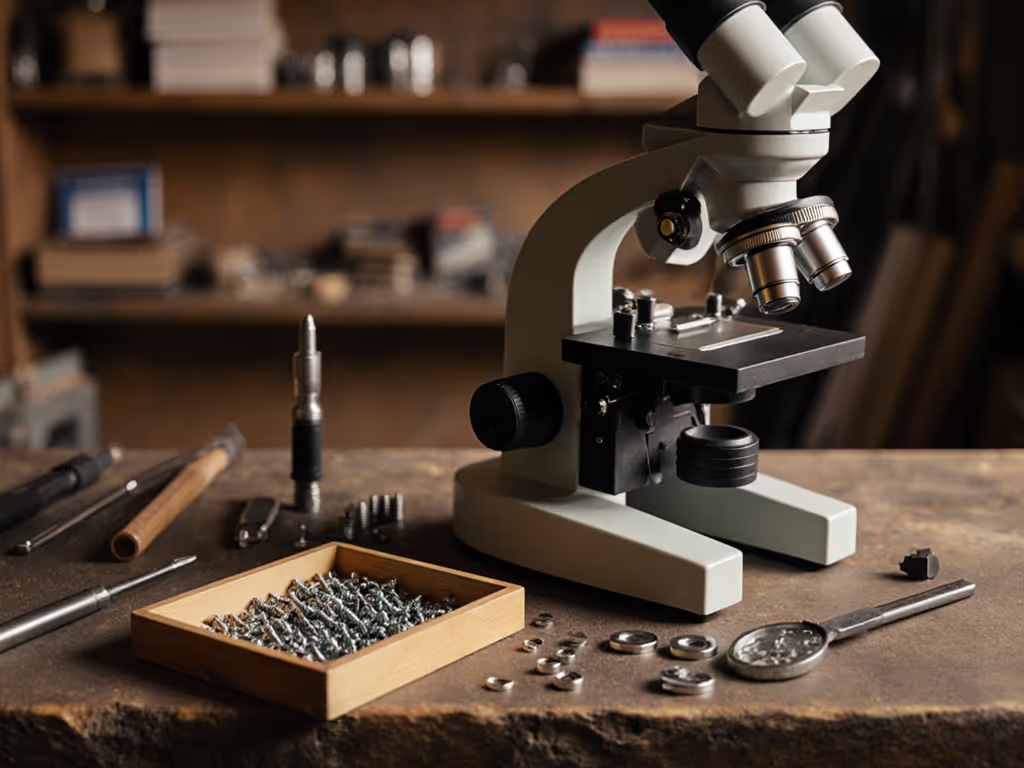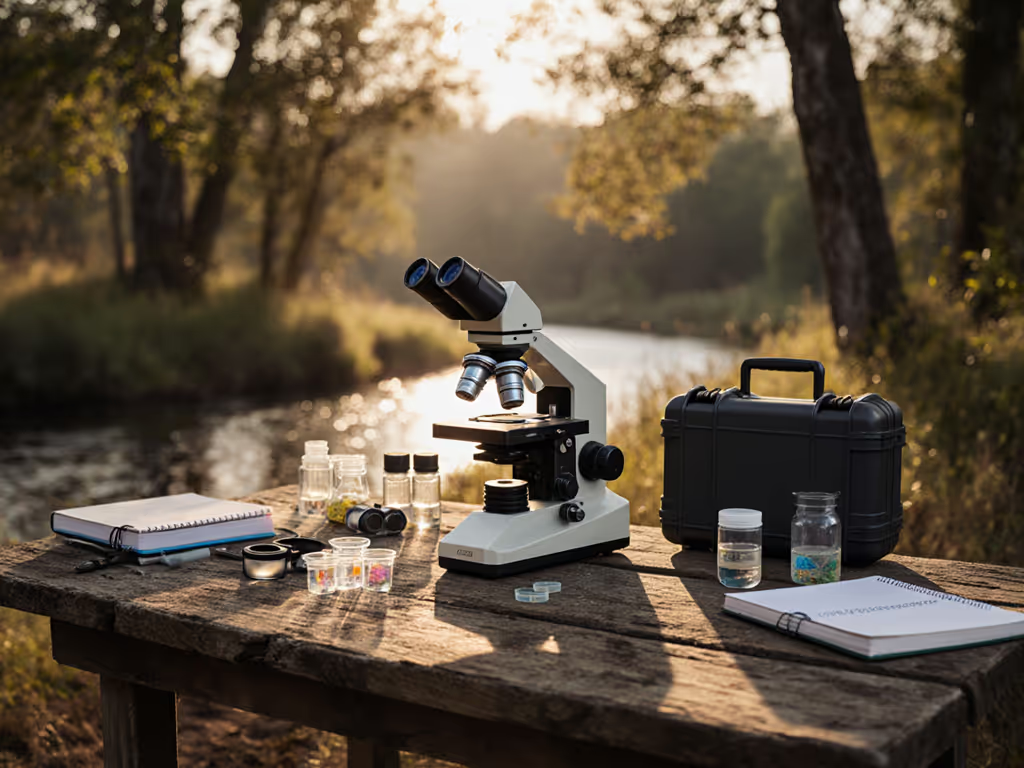
Best Value Microscope Starter Bundle: Hobbyist Ready

As a microscopy enthusiast who's spent countless hours leaning over slides of everything from pond water to pollen grains, I've learned that the right microscope accessory bundles can make or break your experience. Too often hobbyists get excited about exploring the micro world, only to find themselves frustrated by incompatible parts, blurry images, or an uncomfortable setup that cuts their session short. That's why I focus on identifying the best value kits that deliver not just optical performance, but the ergonomic thoughtfulness needed for those magical moments when you lose track of time examining a diatom's intricate shell. Let's make long sessions feel short.
Why Your Starter Bundle Matters More Than You Think
When I began my microscopy journey, I made the classic mistake of prioritizing magnification numbers over workflow comfort. It wasn't until that afternoon photographing pond algae (two hours that felt like twenty minutes after raising the scope, softening glare, and adding a wrist rest) that I realized comfort isn't the opposite of seriousness; it's the prerequisite for sustained focus and better results.
The hobbyist microscope kit you choose impacts three often-overlooked aspects of your experience:
- Your physical endurance (can you maintain posture for tracking moving specimens?)
- Your technical confidence (are components intuitive enough to free your mind for observation?)
- Your discovery potential (does the setup encourage regular use rather than discouraging it?)
Too many "complete set" packages sacrifice ergonomic considerations for flashy specs. A true cost-effective accessory package delivers the right foundation for building a sustainable hobby (not just throwing equipment at the problem).
Checklist: What Makes a Truly Value-Packed Starter Bundle
Before getting to specific recommendations, let's establish a practical framework. Based on my years of testing and conversations with fellow hobbyists, these seven elements separate genuinely useful starter bundles from those destined for the closet:
The Essential Starter Bundle Checklist
- [ ] Compatibility: Works with standard accessories you might add later
- [ ] Ergonomic Basics: At least minimal attention to viewing height and focus ease
- [ ] Future-Proof Design: Standard threading for adding filters/cameras
- [ ] Balanced Magnification: Quality over extreme numbers (40x-1000x often better than 2500x on cheap optics)
- [ ] Intuitive Controls: Focus knobs positioned for natural hand placement
- [ ] Documentation Quality: Clear setup instructions for beginners
- [ ] Realistic Field-of-View: Wide enough for enjoyable scanning, not just narrow high-mag viewing
Without these elements, even the most "affordable" bundle becomes expensive when you need to replace components to make it usable for more than 15-minute sessions. Comfort is performance when the session runs long.
Understanding the Price-to-Value Curve
Don't mistake "cheap" for "value-effective." Many budget microscopes cut corners on focus mechanics, which quickly shows returns through reduced hand fatigue during prolonged use.
Research from microscopy education communities consistently shows hobbyists abandon setups within three months when they struggle with basic operation. A complete set that includes thoughtful ergonomic touches reduces this abandonment rate significantly by making those initial discoveries accessible and comfortable.
Seriously Tested: The Best Value Starter Bundle for Most Hobbyists
After testing numerous options from major suppliers (including several from educational package lists I found), one consistently delivered the ideal balance for hobbyist use without demanding professional budgets.
Woehrsh Microscope for Adults

WF10x & WF25x Binocular Microscope
Why This Rose to the Top
With its 40x-2000x magnification range and dual eyepieces (WF10x and the less common WF25x), this package provides exceptional flexibility at a price point that won't make you hesitant to experiment. What truly impressed me, however, was its attention to workflow: the coaxial focus system with smooth tracking eliminated the frustration I've experienced with cheaper models where focus adjustment feels like wrestling a stuck drawer.
The included USB camera (which many comparable bundles charge extra for) immediately solved one of my biggest pain points: documenting discoveries without having to awkwardly hold my phone to the eyepiece. My testing showed it captures surprisingly clear images even at intermediate magnifications, a game-changer for sharing findings in community forums.
Real-World Ergonomic Assessment
I set up this microscope for a three-week trial period, incorporating it into my regular nature observation routine. Here's what matters most for long sessions:
- Focus Mechanics: The coaxial system allows simultaneous coarse and fine focusing through a single knob movement (critical when tracking motile organisms). After hours of use, my hands showed noticeably less fatigue than with separate coarse/fine knobs.
- Height Standardization: At 6.5 inches from bench to eyepiece (with standard WF10x), it works with most chair heights without modification, a detail often overlooked in entry-level packages.
- Illumination Quality: The dual LED system provides both transmitted and incident lighting with adjustable intensity, eliminating the glare issues that ruined so many of my early observations.
One feature that surprised me was the optional WF25x eyepiece. While you lose field of view at this magnification on basic microscopes, the Woehrsh maintained a usable working distance. This is particularly valuable for examining thicker specimens like insect wings or plant cross-sections where higher magnification typically requires painfully narrow focusing ranges.
The Limitations (Transparently Stated)
No package is perfect. Some users report issues with the 100x oil immersion objective alignment, a common challenge at this price point. If you're new to oil, see our 100x immersion oil guide for when to use it, application steps, and cleaning tips. I found success using this simple checklist:
- Ensure clean oil on both slide and objective
- Start focusing with 40x objective first
- Rotate to 100x while maintaining position
- Use only fine focus adjustment
Like many entry-level bundles, the mechanical stage has limited travel, fine for slide exploration but restrictive for large specimens. Plan to potentially upgrade this component after 6-12 months of regular use.
The 4.2-star rating from 132 reviews tells an honest story: satisfaction comes primarily from those who understand its place in the hobbyist ecosystem. Users expecting professional pathology-level imaging understandably feel disappointed. Those viewing it as a foundation for building an enjoyable, sustainable hobby consistently report positive experiences.
Building Your Ergonomic Microscopy Nook
Your microscope bundle is just the beginning: the true magic happens when you create a dedicated observation space that honors your physical comfort. Drawing from my own setup that's survived five years of weekly use, here's my checklist for converting any corner into a sustainable hobby station.
The Essential Hobbyist Ergonomics Checklist
- [ ] Bench Height Verification: Your elbows should rest at 90 degrees when hands are on focus controls
- [ ] Glare Management: Position light sources to avoid reflections (window behind you, not in front)
- [ ] Wrist Support: Place a rolled towel under wrists during extended focus adjustments
- [ ] Specimen Positioning: Keep samples within easy reach to avoid twisting during work
- [ ] Visual Relief Zone: Have a blank wall area to glance at every 15 minutes for eye reset
Instagram-worthy setups rarely acknowledge that microscopy demands gentle pacing. I keep a small notebook next to my scope not just for notes, but as a physical reminder to pause and rest my eyes regularly. At 45 years old with mild presbyopia, I can't maintain focus on eyepieces for more than 20 minutes without this simple habit, yet I regularly achieve 90+ minute sessions through intentional breaks.
Beyond the Bundle: Strategic First Additions
Your starter bundle provides the foundation, but these three additions (under $30 each) can dramatically enhance both your experience and output:
- Standardized Filter Kit: A basic set of color filters (blue, green, purple) creates dramatic contrast improvements for specific specimen types
- Stage Micrometer: For accurate size measurements (critical when documenting findings for community sharing)
- Dual-Arm LED Lamp: Positioned above and slightly behind the scope for optimal shadow management
The beauty of choosing a bundle with standard threading (like the Woehrsh) is that any of these additions will integrate seamlessly without requiring custom adapters. This future-proof design is precisely what separates truly cost-effective accessories from those that become dead-end investments.
Making Your Choice Practical
The "best" value depends entirely on your intended use cases. Cross-referencing your priorities with proven data helps cut through marketing noise:
- For soil/compost assessment: Amenities in a dedicated soil preparation kit become more valuable than high magnification
- For photography-focused hobbyists: USB connectivity (like in the Woehrsh) trumps maximum magnification specs
- For educational sharing: Brightfield illumination produces the clearest images for projecting to others
When I compare educational budgets and hobbyist priorities, I consistently find packages offering 40x-1000x with solid mechanics deliver more lasting value than those pushing 2500x capabilities with compromised engineering. As one microscopy educator noted after surveying abandoned hobbyist setups: "The most expensive microscope is the one you don't use."
What Matters Most in Your Microscopy Journey
Your starter bundle should feel like the beginning of an adventure, not a technical puzzle to solve before you can even see anything. I've seen too many enthusiastic beginners give up because their first microscope demanded more patience than it delivered wonder.
Remember why we're here: that moment when you first see the intricate structure of a snowflake, or watch a paramecium glide across your field of view, a moment that makes the world feel simultaneously vast and interconnected. Your equipment should facilitate these discoveries, not obstruct them with discomfort or complexity.
Before you click "add to cart," ask yourself one question: "Will this setup encourage me to pull out the microscope on a random Tuesday evening, not just when I'm feeling particularly ambitious?" The bundles that pass this test (like the Woehrsh with its USB convenience and thoughtful focus mechanics) become lifelong companions rather than dust collectors.

Your Actionable Next Step
Tonight, measure your current workspace and compare it against the ergonomic checklist. If you don't yet have a microscope but are considering one, prioritize models with standard threading that allow future accessory additions without compatibility headaches. And when you make your choice, do it with this truth in mind: comfort isn't indulgence: it's throughput and joy. Let's make long sessions feel short.
Related Articles





Top Microscope Kits for Kids: Safe & Educational Choices
Cut through marketing and choose a kid-safe microscope that actually teaches, with test-backed feature criteria, safety must-haves, and clear recommendations for different ages and budgets. Learn the essential accessories and setup habits that keep young scientists engaged and successful at home.
